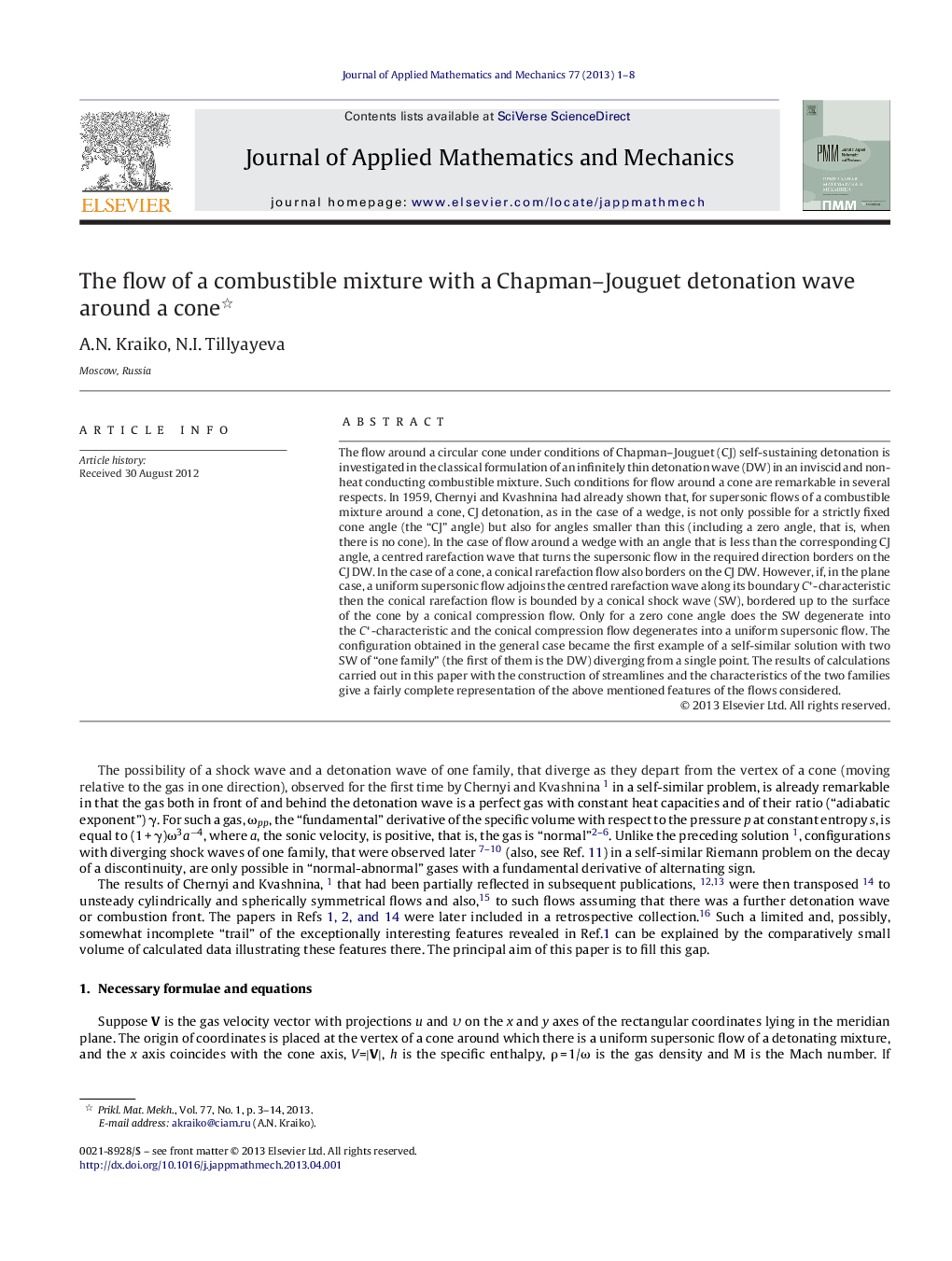| کد مقاله | کد نشریه | سال انتشار | مقاله انگلیسی | نسخه تمام متن |
|---|---|---|---|---|
| 791435 | 901960 | 2013 | 8 صفحه PDF | دانلود رایگان |

The flow around a circular cone under conditions of Chapman–Jouguet (CJ) self-sustaining detonation is investigated in the classical formulation of an infinitely thin detonation wave (DW) in an inviscid and non-heat conducting combustible mixture. Such conditions for flow around a cone are remarkable in several respects. In 1959, Chernyi and Kvashnina had already shown that, for supersonic flows of a combustible mixture around a cone, CJ detonation, as in the case of a wedge, is not only possible for a strictly fixed cone angle (the “CJ” angle) but also for angles smaller than this (including a zero angle, that is, when there is no cone). In the case of flow around a wedge with an angle that is less than the corresponding CJ angle, a centred rarefaction wave that turns the supersonic flow in the required direction borders on the CJ DW. In the case of a cone, a conical rarefaction flow also borders on the CJ DW. However, if, in the plane case, a uniform supersonic flow adjoins the centred rarefaction wave along its boundary C+-characteristic then the conical rarefaction flow is bounded by a conical shock wave (SW), bordered up to the surface of the cone by a conical compression flow. Only for a zero cone angle does the SW degenerate into the C+-characteristic and the conical compression flow degenerates into a uniform supersonic flow. The configuration obtained in the general case became the first example of a self-similar solution with two SW of “one family” (the first of them is the DW) diverging from a single point. The results of calculations carried out in this paper with the construction of streamlines and the characteristics of the two families give a fairly complete representation of the above mentioned features of the flows considered.
Journal: Journal of Applied Mathematics and Mechanics - Volume 77, Issue 1, 2013, Pages 1–8